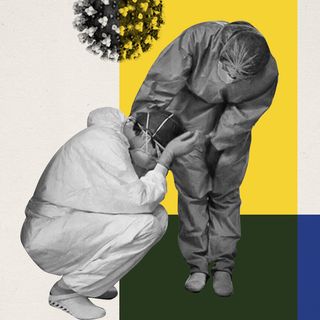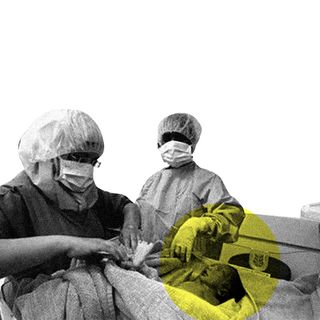Scientists have designed an algorithm that can identify the people most likely to develop active tuberculosis (TB) before they start getting sick, a tool that could limit the spread of a disease that caused 1.4 million deaths globally in 2019.
Published in Nature Medicine this week, the algorithm is for use with people who are infected with the Mycobacterium tuberculosis bacterium but are in TB’s latent stage, when the bacterium doesn’t yet cause any illness and is not contagious. The algorithm assesses the risk of their latent TB developing into active TB according to a range of factors, including age, timing and level of exposure to others with TB, and whether or not an individual is immunocompromised.
According to the World Health Organization, around a quarter of the world’s population has latent TB, which doesn’t necessarily become active for everyone.
The researchers hope the algorithm can prevent cases of latent TB from becoming active — and thus sickening and spreading — by identifying the people most likely to become ill and enabling doctors to treat them proactively. “If we can identify people at highest risk of TB disease, we can treat their infection with preventive antibiotics, before they become unwell,” Dr. Rishi Gupta, lead author of the paper, told The Guardian.
“[The algorithm is] important because it allows us to give preventive treatment to people who are most likely to benefit and to avoid unnecessary treatment for people who are at very low risk. This takes us a step forward to be more precise,” said Professor Ibrahim Abubakar, who was involved in the study. This will help avoid “unnecessary preventative treatment,” that can lead to “associated risks of drug toxicity to patients and excess economic costs to health services.”
Related on The Swaddle:
In Major Breakthrough, Experimental TB Vaccine First to Show Success in 3‑Year Trial
The researchers claim this is the first time patients’ histories have been factored in to predict the risk of developing active TB. “Current tests to predict who will develop active TB are not very accurate. The risk of becoming unwell with TB among people with a positive test also depends on many factors — our study highlights the fact that young children, people recently exposed to TB, and individuals with ‘higher’ positive test results have a significantly higher risk of developing TB disease,” Dr. Gupta said.
Countries like Europe, the U.S., and Australia, where the transmission of TB is lower, could eliminate the disease altogether with the aid of the algorithm, researchers say. In India, the battle to eradicate TB is much bigger and longer: at present, 26% of the total TB cases in the world are from India, according to the WHO. And India’s latest annual report on TB states that the disease claimed 79,144 lives in 2019.
Still, the algorithm could help India curb it’s TB numbers eventually — that is, if the current and urgent threat of the global pandemic wasn’t taking attention away from the long-term, ongoing threat of TB in India. Due to the pandemic’s disruption in health services and higher household transmission due to the lockdown, the government estimates India could have 5 lakh more TB cases — and 1.5 lakh more deaths — in the next five years.
“As the [Covid19] pandemic sweeps the world, I and others working to fight TB have growing anxiety about what this pandemic will do to a much older infectious killer — tuberculosis,” Dr. Madhukar Pai, director at McGill University’s Internal Tuberculosis Centre, wrote in Forbes.




